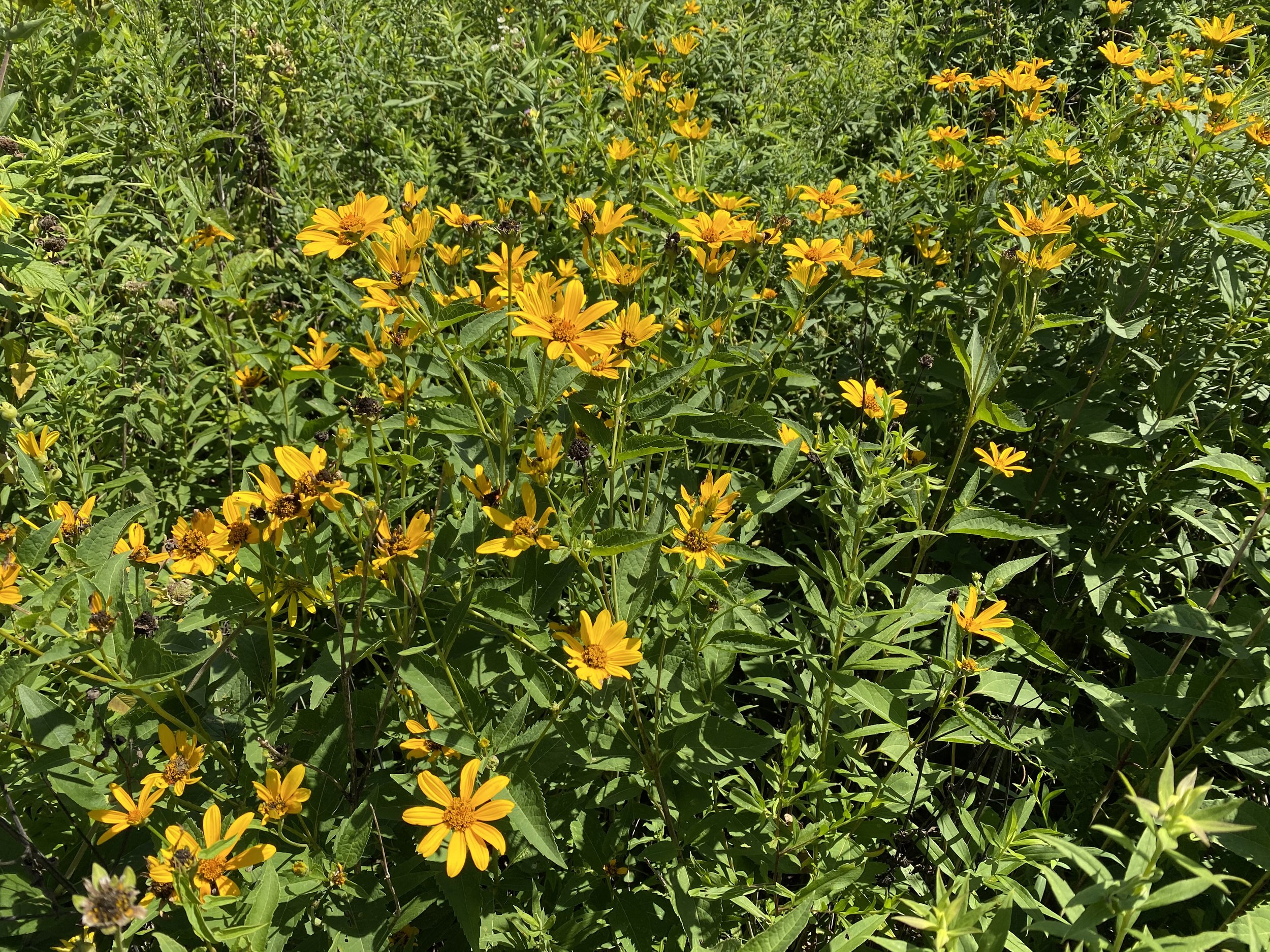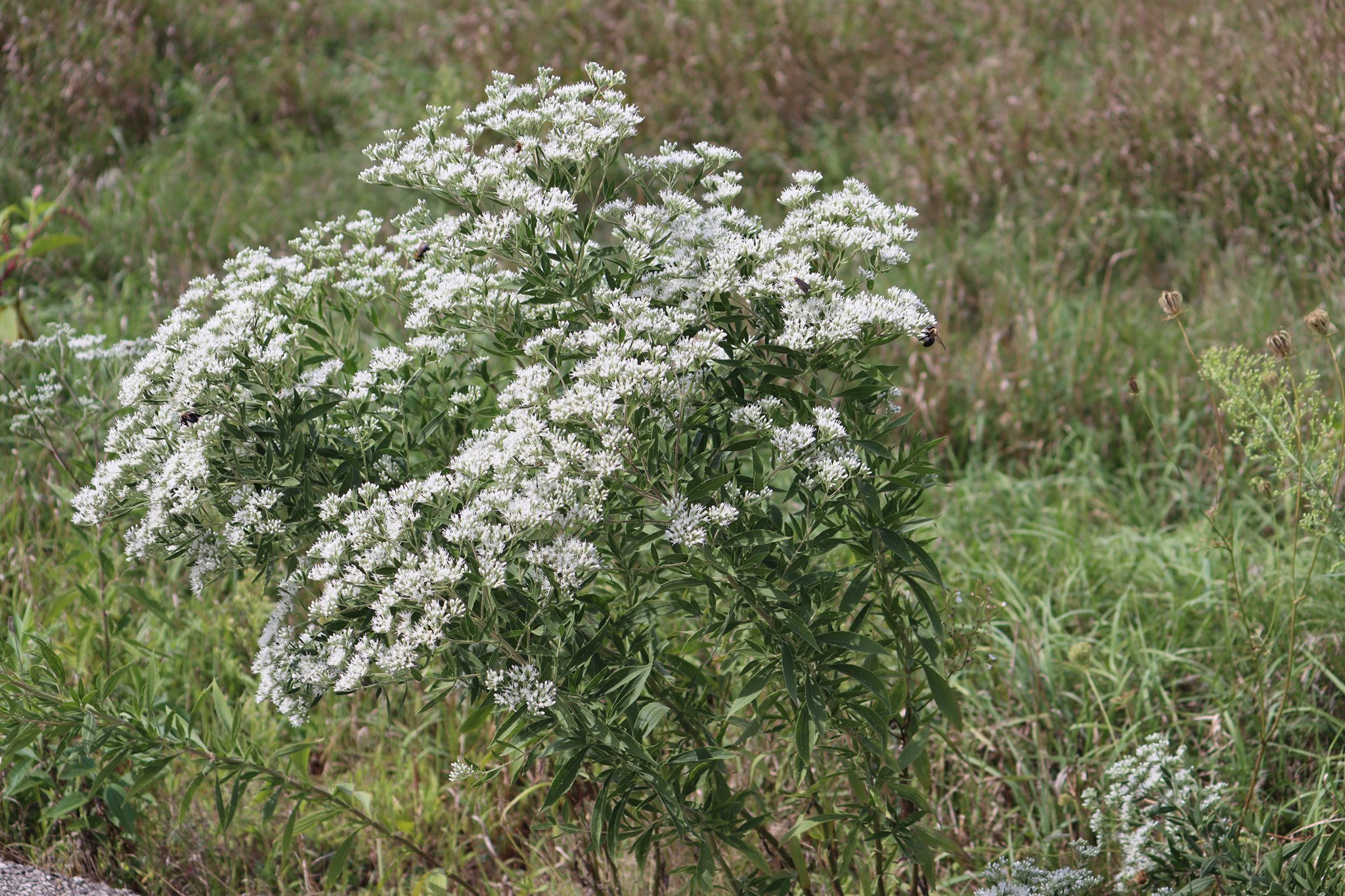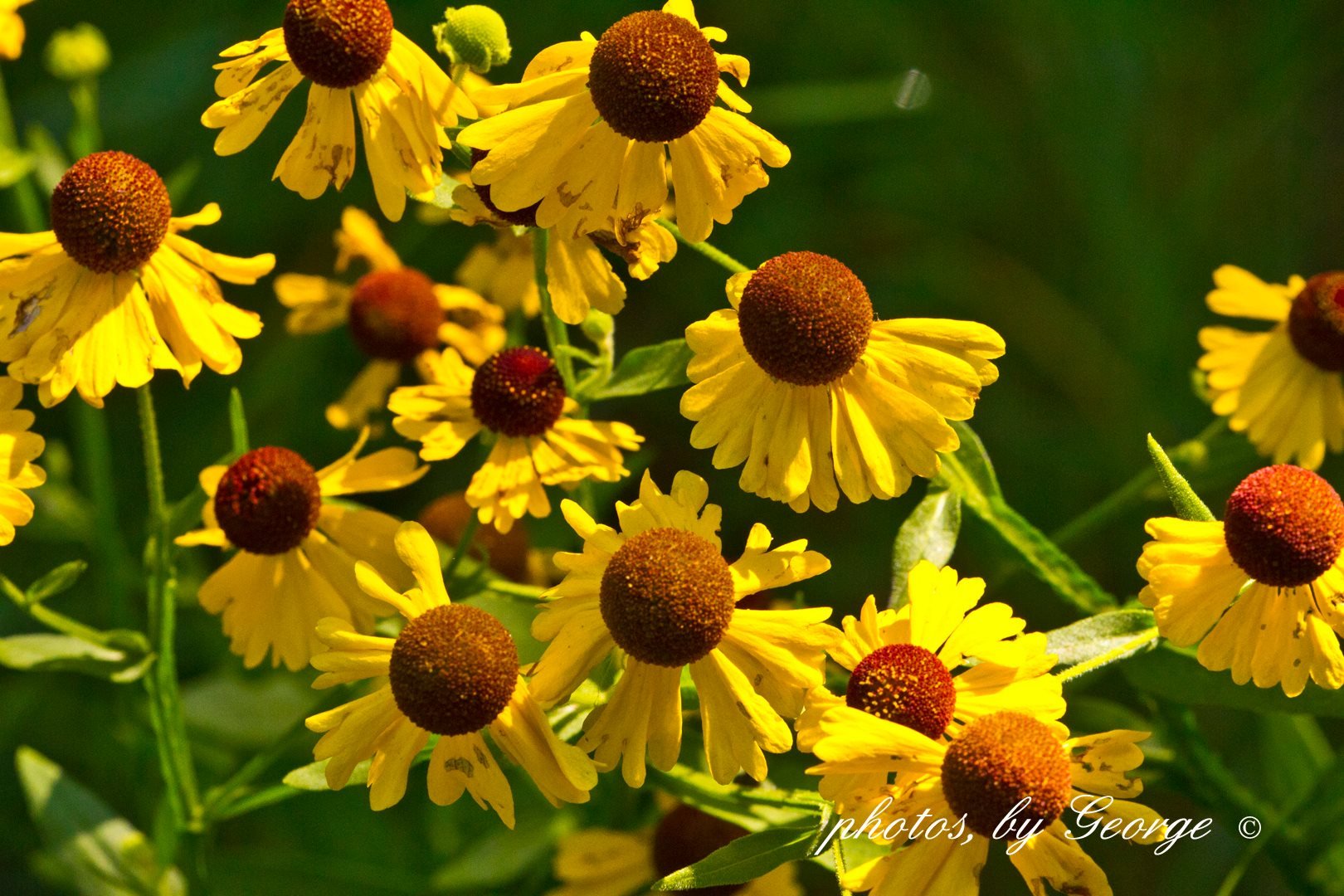Culver’s Root in a Native Meadow Installation
Culver's Root (Veronicastrum virginicum) is a perennial plant of prairies and savannas that rises to 3 to 5 feet tall when mature; depending on soil moisture, surrounding competition, and sunlight exposure. It produces wand-like flower spikes that attract bumblebees, mason bees, green metallic bees, masked bees, sphecid wasps, butterflies, moths, syrphid flies and beetle species. In bloom, similar to Rattlesnake master - it attracts a very wide variety of pollinators. Watching both Rattlesnake Master and Culver’s Root in bloom is a sure way of encountering pollinators you’ve never seen before. This plant is adapted to seasonally wet soils as well as seasonally dry soils with intermediate drought tolerance.
Select/click the images above to expand them then click/tap to advance to the next picture. Also, Turn your cellphone side ways for horizontal pictures, and straight up and down for vertical pictures.
Culver's Root is subject to little mammal grazing and doesn't commonly suffer greatly from insect damage. This is a long-lived species that can survive to some extent in prairies with minimal disturbance (un-grazed prairies). The whorled, upright foliage gives this plant an excellent form in the summer prairie garden or along trails in meadow plantings. The architecture alone of Culver’s root inside or outside of bloom makes it worthy of it’s pricey tag in seeds per ounce. Also the seeds per ounce is high which makes the price per seed lower than most species. If lacking the funds to seed it at a good ratio (expensive seed), then grow 10 to 40 plugs of it per half acre to strategically insert into your meadow planting. In pollinator gardens they assume a moderately large width in their maturity; reducing the amount you have to plant to create a good aesthetic effect.
COMPANION PLANTS OF CULVER’S ROOT
CLICK IMAGES BELOW TO EXPAND THEM.
Select/click the images above to expand them then click/tap to advance to the next picture. Also, Turn your cellphone side ways for horizontal pictures, and straight up and down for vertical pictures.
Pollinator Garden Positioning of Companion Plants
The following paragraph will help you position the above pictured companion plants with Culver’s Root in Pollinator Gardens. In front should translate to being planted on the Southeast, South, or Southwest side of Culver’s Root. Behind translates to being planted on the Northeast, North, Northwest side of Culver’s Root. And beside is self-explanatory - East or West side of Culver’s Root.
Blue Wild Indigo & White Wild Indigo - beside or in front. Ohio Spiderwort - beside or in front. Common Milkweed - beside or behind. Early Sunflower - beside or behind. Wild Bergamot - beside or behind. Wild Senna - behind. Royal Catchfly - in front. Grey headed Coneflower - beside or behind. Prairie Dock - in front. Rosinweed - behind or beside. Whorled Rosinweed - behind. Tall Coreopsis - behind. Eutrochium maculatum - behind. Tall Boneset - behind or beside. Common Sneezeweed - in front. Purple Headed Sneezeweed in front. New England Aster - beside or behind. Tall Ironweed - Behind.
Germination Tips for Plugs: Cold moist Stratify for 30 - 40 days then surface sow - compress into surface of medium/soil when sowing.
The production of these articles is sustained purely by our book sales. If you’d like to support us, consider one of our books below.
Receive 40% off of our Native Plant Propagation Guide/Nursery Model book when purchased as a package. deal with either our Native Meadowscaping book or our Native Plant Agriculture book at this link.
Learn about what our Native Meadowscaping book has to offer here at this link.
Learn about what our Native Plant Agriculture Vol. 1 book has to offer here at this link.
Learn about what our Native Plant Propagation Guide & Nursery Model has to offer here at this link.
























